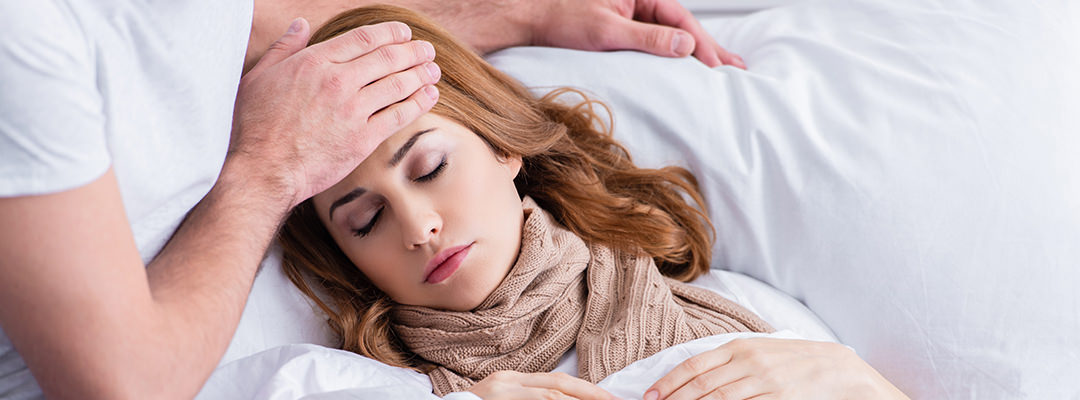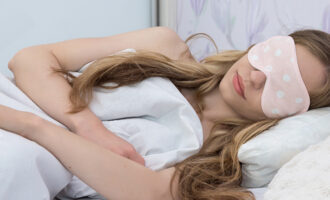Dreams are an endless source of fascination. For centuries scholars have been trying to understand why we dream, how our dreaming lives connect to our waking lives, and what we can learn from them to keep ourselves healthy and safe.
One thing they learned along the way is that dreams can spike in discomfort and intensity when we’re ill — in particular when our temperatures are running high. This fever-induced dreaming can be unpleasant, confusing, and scary. But can they really hurt you? Where do fever dreams come from? Let’s explore what they are fever dreams, what causes them, and what steps we can take to keep them at bay.
What Is a Fever Dream?
The body is a complex thing, though our bodies and our minds might not always agree on what’s best for us. Fevers develop because our bodies are trying to fight off negative bacteria and pathogens, the kind that can make us very sick. Since these types of viruses can’t survive high temperatures, our bodies begin to overheat as a way of creating an inhospitable environment.
Basically, fevers are our body’s way of trying to protect us. Unfortunately, they also come with some pretty bummer side effects, including fever dreams.
Fever dreams are intense, vivid, emotionally charged dreams that happen at elevated body temperatures. An in-depth study on them recounted that 94% of people found the dreams to be negative. These dreams can be different for everyone, but often they include themes of heat, illness, and even past experiences from lost childhood and adolescent dreams.
What Causes Fever Dreams?
It’ll come as no surprise that fever dreams are most common when we have a fever, but they can also come at other times when our body temperature is elevated, such as during heatstroke. In these instances, they can even be present as hallucinations while we’re awake.
The healthy temperature range for your body is 97-99 degrees Fahrenheit. When we climb above that range our brains begin to lose some of their cognitive ability.
When we sleep under normal circumstances, we fluctuate between states of rapid eye movement (REM) and non-rapid eye movement (NREM). As you may have picked up from various sleep-centric horror movies and medical drama episodes, the REM state is where we experience most of our dreaming. NREM sleep is deeper, and you’re less likely to recall any dreams passing through your brain during this time. This is also where the body does most of its growing and muscle repairs.
Typically, REM sleep in an adult begins about ninety minutes after you fall asleep. The first REM phase lasts for about ten minutes before slipping back into NREM, and then switches back to REM sleep after another ninety minutes or so. Each REM stage grows progressively longer; the last one of a full night’s sleep lasts for around an hour. If you wake up during these REM cycles you’re more likely to remember your dreams. When we have a fever, our overheated brain suppresses these cycles and keeps us fluctuating between NREM and REM sleep.
Scientists haven’t completely determined the link between fractured REM sleep and confusing, negative landscaped dreams, but it’s known that the same part of the brain that regulates our sleep is also the same part that’s in charge of temperature regulation. It’s believed that while the brain is raising our body temperature to fight these external threats, it’s also letting in fractured mental activity that leads to more intense dreaming.
These vivid dreams aren’t necessarily negative by nature, but they do tend to follow a pattern of what’s called the “continuity hypothesis” — the idea that our dreaming follows the pattern of our waking life. Since we tend to follow patterns of negative thoughts when we’re sick, as well as being isolated from others and feeling physically unwell, these feelings transfer into the imagery of our dreams.
Are They Dangerous?
Despite what Nightmare On Elm Street may have you believe, fever dreams aren’t directly harmful. What they can do is disrupt the quality of your sleep as well as trigger heightened stress and anxiety, which are always unhealthy and even more so when you’re ill.
Sleep deprivation is associated with a whole host of health problems including heart disease, obesity, depression, and other mental health issues. When we’re sick and feverish, it’s even more important that our bodies are in fighting condition. For this reason, fever dreams can slow our recovery process and contribute to longer standing health issues.
The good news is that these intense dreams typically only last as long as your body’s temperature is elevated, or as long as the fever persists. While we can’t dodge them completely, there are a few things we can do to reduce the likelihood of fever dreams while our bodies are on the mend.
Can Fever Dreams Be Prevented?
While we can’t prevent them entirely, we can take certain steps to reduce their likelihood of terrorizing us while we sleep.
Regulate Body Temperature
Since fever dreams appear when our bodies are overheated, any steps you can take to regulate your body temperature before you go to sleep for the night are a good thing. Drink plenty of liquid, bathe or shower in lukewarm water rather than boiling hot, stay away from very hot or spicy foods, and take fever-reducing medications such as ibuprofen or acetaminophen, as recommended by your doctor.
Avoid Negative Stimulation
While the temptation to curl up on the sofa with a blanket and a film is perfectly understandable when you’re sick, it’s not the best time to be snuggling up with horror movies. Scary images and feelings of suspense may be fun in the moment, but they’ll stay in your subconscious even after you turn the TV off. Instead, stick to a good book, soothing cottagecore drama, or relaxing music.
Likewise, try to avoid stressful work tasks or things that kick up your daytime anxiety, as these feelings will carry over into your sleep as your wonky brain tries to process them in strange, convoluted ways. The hour before bed should always be a time of unwinding, but this is even more important when you’re ill. Set aside any work emails, to-do lists, and social media until the morning — or better yet, until your body has fully healed itself. Since these anxieties can manifest themselves as disturbing fever dreams, try to give yourself a peaceful, non-confrontational emotional environment before you go to sleep.
Get a Good Night’s Sleep
Easier said than done, we know. However, since fever dreams happen when you drift in and out of your REM state, doing what you can to ensure a deeper sleep can only help.
Avoid digital devices before bed as much as possible — not only do they tend to kick up your stress levels, as we saw above, but the blue light from our phone and computer screens can trick the brain into thinking it’s still daytime, making it harder to get a solid night’s rest. Wear clean, loose, comfortable clothing to bed and if you can, keep your bedsheets and pillowcases fresh and clean as well.
Avoid stimulants like tea, coffee, and alcohol (double-check your medications — some pain killers have added caffeine, as this is said to make them more effective. Avoid these varieties right before bedtime). Instead, warm broth or herbal teas are good wind-down beverages when you’re fighting against an illness. By the time you get into bed, you should be as relaxed and clear-headed as possible.
Although science is still seeking to better understand fever dreams, and our relationship with dreaming and nightmares in general, we can all agree that they are not a pleasant experience. Although they don’t cause us any immediate physical damage, they can interfere with our sleeping patterns and make it more difficult for us to heal while we’re sick.
However, remember that these scary experiences are only temporary, and only a side effect of our bodies doing their best to protect us. With the measures we mentioned above, you can work together with your body to keep it healthy and keep the worst of these fever dreams away.





